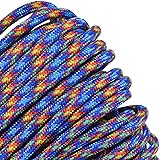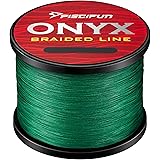Mastering the Catch and Cook Panfish Experience
In outdoor survival, easily accessible food sources are vital. Panfish are one of North America’s most common fish species. They offer a reliable and tasty meal. The video above highlights catching and cooking panfish, showing how simple it can be. This guide will expand on those basics. You will learn to successfully harvest and prepare these abundant freshwater delights.
Why Panfish are the Ultimate Survival Food
Panfish are incredibly widespread. You can find them in most freshwater lakes and ponds. Their small size makes them easy to catch. They also reproduce quickly, ensuring sustainable populations. A successful outing can provide a substantial meal. Panfish are excellent for any outdoor adventure.
Many varieties of panfish exist. Bluegill, crappie, and perch are common types. Sunfish, rock bass, and warmouth also fall into this category. Each offers a slightly different texture or taste. All are generally delicious and easy to prepare.
Essential Gear for Catching Panfish
You do not need fancy equipment. A simple rod and reel setup works well. Even a basic hand line can land these fish. Light fishing line, like 4-6 pound test, is ideal. Small hooks, sizes 6-10, are best for their mouths.
Panfish are not picky eaters. Live bait like worms, crickets, or minnows works wonders. Small artificial lures also entice them. Tiny jigs or spinners are often effective. A bobber helps detect subtle bites. This simple kit fits easily into any backpack.
Finding Panfish Hotspots
As the video shows, panfish love weeds. Aquatic vegetation provides cover and food. Look for submerged logs, brush piles, or rock formations. These are called “structure.” Docks and fallen trees are also good spots. Panfish gather here for safety and food.
They often stay in shallower water. However, they may move deeper in hot weather. Early mornings and late evenings are prime fishing times. These fish are generally active feeders. They offer consistent action for anglers of all skill levels.
Basic Catching Techniques
Casting near structure is very effective. Let your bait or lure sink slowly. Panfish will often strike on the drop. Using a bobber makes fishing easier. Set the bobber depth for 2-4 feet. Watch for any sudden dips or movements. A gentle tug on the line usually signals a bite.
When you feel a bite, set the hook gently. Panfish have softer mouths. Too much force can tear the hook out. Reel them in steadily. Keep the line taut. You can catch many in a short time once you find a school.
Cleaning Your Catch: Gutting and Scaling Panfish
Cleaning fish is an important step. It prepares them for cooking. The video briefly touches on gutting and scaling. Here’s a more detailed approach. Always be careful when using a knife.
Step-by-Step Gutting
- First, make an incision along the fish’s belly. Start from the vent and go towards the head. Stop before the gills.
- Next, carefully open the cavity. Reach in with your fingers. Remove all internal organs.
- Then, scrape out the dark bloodline along the backbone. This improves the taste.
- Finally, rinse the cavity thoroughly with clean water.
Scaling Your Panfish
Scaling removes the protective outer layer. This makes the skin more pleasant to eat. Hold the fish firmly by the tail. Use the back of a knife or a fish scaler. Scrape against the grain of the scales. Start from the tail and move towards the head. The scales will come off easily. You may need to apply some pressure. Rinse the fish again to remove loose scales.
Some people choose to fillet panfish. This removes bones entirely. However, cooking them whole is simple. It is often preferred in outdoor settings. Cooked whole, the bones are easier to remove.
Cooking Your Panfish: Pan-Frying Perfection
The video demonstrates a simple pan-frying method. This is perfect for camp cooking. You only need a pan, a heat source, and a few ingredients. Freshly caught panfish taste incredible over a campfire.
Simple Pan-Frying Steps
- First, heat butter or oil in a pan. Medium heat works best.
- Next, season your cleaned fish. Salt and pepper are essential. Garlic powder or a dash of chili powder adds flavor.
- Then, place the fish in the hot pan. Cook for about six to seven minutes per side. This time is ideal for small panfish. Larger fish may need slightly more.
- Also, look for the flesh to turn opaque. It should flake easily with a fork. That means it is fully cooked.
- Finally, carefully remove the fish. Serve hot.
Cooking panfish quickly preserves their delicate flavor. You can also cook them over an open fire. Wrap them in foil with butter and seasoning. Place the packet in the coals. This creates a delicious steamed fish. It is another excellent camp cooking option.
Crappie vs. Bluegill: A Taste Comparison
Both crappie and bluegill are excellent eating fish. The video noted a slight difference. Crappie meat is often described as a little softer. It has a very mild flavor. Bluegill meat is firmer and flakier. It also has a distinct, sweet taste. Both are fantastic when fresh. Their mild flavors make them versatile for various seasonings.
Ultimately, the best panfish is the one you catch. Enjoying a fresh catch is a rewarding experience. It connects you to nature. Mastering the art of the catch and cook panfish meal is a valuable outdoor skill.











